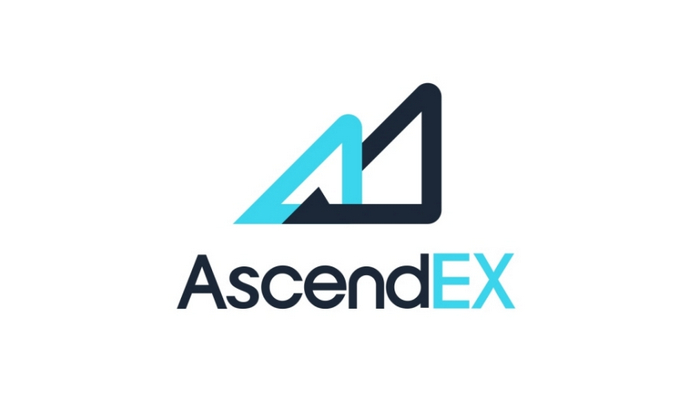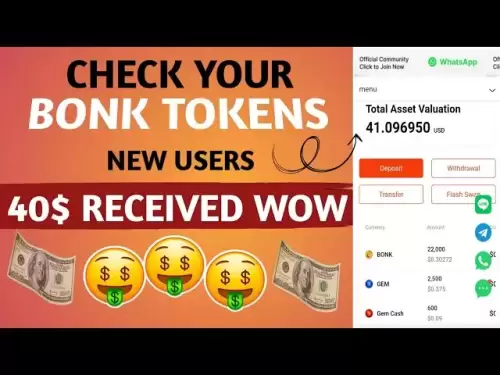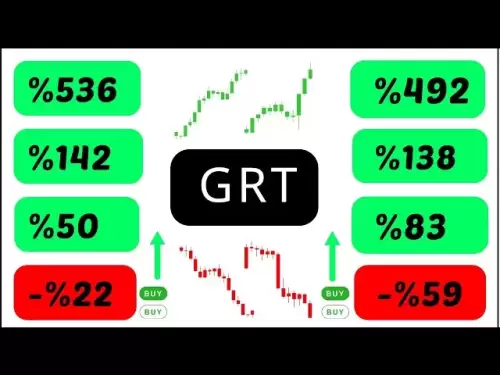-
 Bitcoin
Bitcoin $107,467.9126
1.26% -
 Ethereum
Ethereum $2,447.5288
-0.12% -
 Tether USDt
Tether USDt $1.0005
0.00% -
 XRP
XRP $2.1921
0.13% -
 BNB
BNB $647.2897
0.50% -
 Solana
Solana $144.8627
-0.37% -
 USDC
USDC $0.9996
-0.03% -
 TRON
TRON $0.2732
0.10% -
 Dogecoin
Dogecoin $0.1652
-0.18% -
 Cardano
Cardano $0.5700
-2.87% -
 Hyperliquid
Hyperliquid $37.0274
-1.81% -
 Bitcoin Cash
Bitcoin Cash $484.6957
0.19% -
 Sui
Sui $2.7354
-2.19% -
 Chainlink
Chainlink $13.1727
-1.49% -
 UNUS SED LEO
UNUS SED LEO $8.9978
-0.04% -
 Stellar
Stellar $0.2421
-2.33% -
 Avalanche
Avalanche $17.5633
-3.51% -
 Toncoin
Toncoin $2.8476
-1.94% -
 Shiba Inu
Shiba Inu $0.0...01166
-0.56% -
 Litecoin
Litecoin $85.1071
0.09% -
 Hedera
Hedera $0.1502
-2.96% -
 Monero
Monero $310.2774
-1.64% -
 Dai
Dai $0.9999
-0.01% -
 Polkadot
Polkadot $3.3584
-1.88% -
 Ethena USDe
Ethena USDe $1.0003
-0.04% -
 Bitget Token
Bitget Token $4.4443
2.90% -
 Pi
Pi $0.6242
14.04% -
 Uniswap
Uniswap $6.9774
-2.86% -
 Pepe
Pepe $0.0...09535
-5.05% -
 Aave
Aave $256.7574
-3.35%
How much margin is required for AscendEX contracts to avoid liquidation?
Margin trading on AscendEX allows traders to control a larger cryptocurrency position with a smaller initial investment through leverage, but it's crucial to understand the margin requirements to avoid triggering liquidation and losing the initial investment.
Nov 29, 2024 at 03:29 pm

Margin Requirements for AscendEX Contracts: Avoiding Liquidation
Margin trading in the cryptocurrency market enables traders to leverage their positions, potentially multiplying both profits and risks. However, it's crucial to understand the margin requirements of each exchange to avoid liquidation. This article aims to provide a comprehensive guide on the margin requirements for AscendEX contracts and strategies for managing risk.
Step 1: Understanding Leverage and Margin Requirements
Leverage refers to the ratio of borrowed funds to the trader's own capital. Margin trading on AscendEX allows traders to utilize leverage, enabling them to control a larger position with a smaller initial investment. However, leverage magnifies both potential gains and losses.
Margin requirements, expressed as a percentage, represent the minimum amount of capital a trader must maintain in their account to cover potential losses. If the margin level falls below the requirement, the exchange may force liquidation to cover the losses, resulting in the potential loss of the trader's initial investment.
Step 2: Identifying Margin Requirements for AscendEX Contracts
AscendEX categorizes its contracts into three types: Standard, USDT-Margined, and Coin-Margined. Each contract type has its specific margin requirements, varying depending on the underlying asset and market conditions.
- Standard Contracts: These contracts are traded with leverage borrowed in the same underlying cryptocurrency. For example, BTC/USD Standard contracts require a 5% margin.
- USDT-Margined Contracts: These contracts are traded with leverage borrowed in USDT, a stablecoin. USDT-Margined contracts typically have lower margin requirements compared to Standard contracts, offering greater leverage. For instance, BTC/USDT-Margined contracts require a 3% margin.
- Coin-Margined Contracts: These contracts enable traders to collateralize positions with other cryptocurrencies. The margin requirements for Coin-Margined contracts depend on the chosen collateral asset, ranging between 3% and 20%.
Step 3: Calculating Margin Required for Specific Trades
To determine the margin required for a specific trade, traders should consider the contract type, leverage, and position size.
- Formula for Margin Required:
Margin Required = Margin Requirement * Leverage * Position Size- Example: A trader wants to open a long position of 10 BTC in the BTC/USD Standard contract with 5x leverage.
Margin Required = 0.05 * 5 * 10 = 2.5 BTCIn this scenario, the trader would need to maintain a margin balance of at least 2.5 BTC to avoid liquidation.
Step 4: Strategies for Managing Margin Risk
- Choose Appropriate Leverage: Select a leverage level that aligns with your risk tolerance and trading goals. Higher leverage amplifies both potential profits and risks.
- Maintain Adequate Margin: Ensure your account balance meets or exceeds the margin requirements for your open positions. Close or reduce positions if necessary to maintain a healthy margin level.
- Monitor Market Conditions: Stay informed about market volatility and price movements. Adjust your leverage accordingly to manage risk.
- Use Limit Orders: Use limit orders to set clear entry and exit points for your trades, reducing the likelihood of unexpected liquidations.
- Diversify Positions: Consider spreading your capital across multiple contracts to reduce the impact of adverse price movements on any single position.
Disclaimer:info@kdj.com
The information provided is not trading advice. kdj.com does not assume any responsibility for any investments made based on the information provided in this article. Cryptocurrencies are highly volatile and it is highly recommended that you invest with caution after thorough research!
If you believe that the content used on this website infringes your copyright, please contact us immediately (info@kdj.com) and we will delete it promptly.
- Bitcoin's Market Dominance: A Virtual Asset Overview in '25
- 2025-06-26 12:25:13
- Ministry of Finance, Silver Coin, Golden Year: A Collector's Gem
- 2025-06-26 12:25:13
- Fiat Fading, Bitcoin at $107K, USD at Cycle Lows: What's Going On?
- 2025-06-26 13:25:12
- XRP Price Prediction: June 26th - Breakout Incoming?
- 2025-06-26 12:50:12
- Railway Protests and Strikes: A Global Perspective
- 2025-06-26 13:07:14
- Bitcoin, Ethereum, and Crypto ETFs: What's the Deal?
- 2025-06-26 13:25:12
Related knowledge

How to use the price slope to filter the false breakthrough signal of the contract?
Jun 20,2025 at 06:56pm
Understanding the Concept of Price Slope in Contract TradingIn contract trading, especially within cryptocurrency derivatives markets, price slope refers to the rate at which the price changes over a specific time period. It helps traders assess the strength and sustainability of a trend. A steep slope may indicate strong momentum, while a shallow slope...

How to determine the expected volatility of the contract through the volatility cone?
Jun 19,2025 at 12:28pm
Understanding the Basics of Volatility in Cryptocurrency ContractsIn the realm of cryptocurrency trading, volatility is a key metric that traders use to assess potential risk and reward. When dealing with futures contracts, understanding how volatile an asset might become over time is crucial for position sizing, risk management, and strategy developmen...

How to formulate a contract intraday trading plan in combination with the pivot point system?
Jun 21,2025 at 03:42pm
Understanding the Basics of Pivot Points in Cryptocurrency TradingPivot points are technical analysis tools used by traders to identify potential support and resistance levels. These levels are calculated using the previous day's high, low, and closing prices. In the context of cryptocurrency trading, where markets operate 24/7, pivot points help trader...

How to adjust the contract position ratio through the price fluctuation entropy?
Jun 22,2025 at 11:42am
Understanding Price Fluctuation Entropy in Cryptocurrency ContractsIn the world of cryptocurrency futures trading, price fluctuation entropy is a relatively new concept used to measure market volatility and uncertainty. It derives from information theory, where entropy refers to the degree of randomness or unpredictability in a system. In crypto contrac...

How to use the volume swing indicator to predict the contract volume-price divergence?
Jun 18,2025 at 11:42pm
Understanding the Volume Swing IndicatorThe volume swing indicator is a technical analysis tool used primarily in cryptocurrency trading to evaluate changes in volume over time. Unlike price-based indicators, this metric focuses solely on trading volume, which can provide early signals about potential market reversals or continuations. The key idea behi...

How to use the Gaussian channel to set the contract trend tracking stop loss?
Jun 18,2025 at 09:21pm
Understanding the Gaussian Channel in Cryptocurrency TradingThe Gaussian channel is a technical indicator used primarily in financial markets, including cryptocurrency trading, to identify trends and potential reversal points. It is based on statistical principles derived from the normal distribution, commonly known as the Gaussian distribution or bell ...

How to use the price slope to filter the false breakthrough signal of the contract?
Jun 20,2025 at 06:56pm
Understanding the Concept of Price Slope in Contract TradingIn contract trading, especially within cryptocurrency derivatives markets, price slope refers to the rate at which the price changes over a specific time period. It helps traders assess the strength and sustainability of a trend. A steep slope may indicate strong momentum, while a shallow slope...

How to determine the expected volatility of the contract through the volatility cone?
Jun 19,2025 at 12:28pm
Understanding the Basics of Volatility in Cryptocurrency ContractsIn the realm of cryptocurrency trading, volatility is a key metric that traders use to assess potential risk and reward. When dealing with futures contracts, understanding how volatile an asset might become over time is crucial for position sizing, risk management, and strategy developmen...

How to formulate a contract intraday trading plan in combination with the pivot point system?
Jun 21,2025 at 03:42pm
Understanding the Basics of Pivot Points in Cryptocurrency TradingPivot points are technical analysis tools used by traders to identify potential support and resistance levels. These levels are calculated using the previous day's high, low, and closing prices. In the context of cryptocurrency trading, where markets operate 24/7, pivot points help trader...

How to adjust the contract position ratio through the price fluctuation entropy?
Jun 22,2025 at 11:42am
Understanding Price Fluctuation Entropy in Cryptocurrency ContractsIn the world of cryptocurrency futures trading, price fluctuation entropy is a relatively new concept used to measure market volatility and uncertainty. It derives from information theory, where entropy refers to the degree of randomness or unpredictability in a system. In crypto contrac...

How to use the volume swing indicator to predict the contract volume-price divergence?
Jun 18,2025 at 11:42pm
Understanding the Volume Swing IndicatorThe volume swing indicator is a technical analysis tool used primarily in cryptocurrency trading to evaluate changes in volume over time. Unlike price-based indicators, this metric focuses solely on trading volume, which can provide early signals about potential market reversals or continuations. The key idea behi...

How to use the Gaussian channel to set the contract trend tracking stop loss?
Jun 18,2025 at 09:21pm
Understanding the Gaussian Channel in Cryptocurrency TradingThe Gaussian channel is a technical indicator used primarily in financial markets, including cryptocurrency trading, to identify trends and potential reversal points. It is based on statistical principles derived from the normal distribution, commonly known as the Gaussian distribution or bell ...
See all articles
























































































